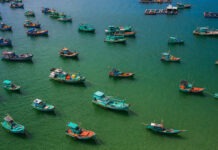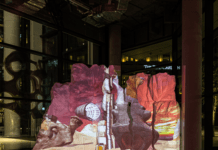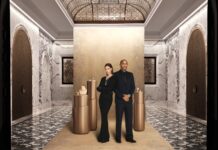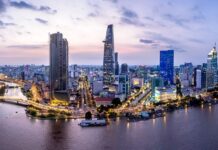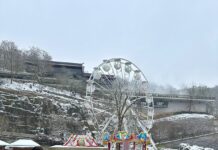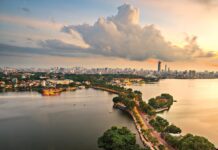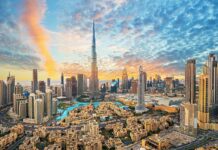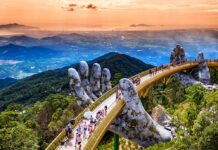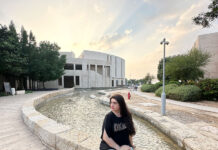If your image of Cyprus is one of densely-packed resorts in the south of the island, you’ll be glad to hear there’s an alternative side. North Cyprus is tranquil, largely unspoilt, and in many respects quaintly old-fashioned.
The government offices in Kyrenia, the main harbour and resort in North Cyprus known as Girne in Turkish, lurk behind colonial, neo-classical façades, and even the cast-iron letterboxes are unmistakably British. The same retro-style is replicated in some of Kyrenia’s newer upmarket hotels, such as the Colony, whose porticoed entrance and cool, spacious rooms hark back to another era. The breakfasts, however, offer a very Cypriot array of cheeses and olives, fresh fruits and vegetables, while the rooftop bar and pool are perfectly contemporary. But from the street it looks very much like a remnant of British rule.
The waters are warm and there are plenty of unspoilt beaches – especially along the Karpas peninsula that points towards Asia. Wild donkeys still roam the dunes here, and some beaches are protected nesting sites for endangered sea turtles. Towering over the fertile coastal plain are the Five Finger Mountains, so-called because of their jagged outcrops surmounted by ancient castles such as St Hilarion. Built by the Byzantines, then enlarged upon by the crusader Lusignan dynasty, Venetians and Ottomans, this stronghold guarded Kyrenia. It’s a stiff climb up to the citadel but the rough-hewn steps are shaded for the most part by scented pines, and one is rewarded at every turn with magnificent views. On a clear day, the Turkish coast and Taurus Mountains shimmer from across the blue divide.
These mountains, rising through groves of olive and carob trees to flower-studded meadows and dark Mediterranean pine, are crisscrossed by hiking trails. Early spring is the best time to appreciate the island’s flowers, including a remarkable variety of orchids – some indigenous to Cyprus – and deep red poppies.
A good base for this kind of holiday is the Lapida Hotel, set in a luxuriant garden outside Lapta. Its owner, Fethi, combines different kinds of citrus or mulberry to produce new strains, while his wife offers instruction in preparing traditional Cypriot food. Among the delicacies produced are stuffed pumpkin flowers, dry-cooked börek, and halloumi cheese pie.
Cypriot cuisine is homely and depends on the freshness of the ingredients – wild herbs, pine nuts, honey, fresh sheep or goat cheeses – and in North Cyprus you can still find the real thing. Tourists can wander down to the old port in Kyrenia to sip one of the local brandy and lemon cocktails inside the castle walls. Visit the medieval dungeons and stared down at the remarkably intact remains of a trading ship that foundered offshore 2,300 years ago. A succession of foreign rulers has left their mark on the island but – curiously – it is the last 40 years of isolation that makes North Cyprus so distinct. It may take a few days to adjust to the relaxed pace, but it will be well worth it, you can find so many interesting things to do in North Cyprus.
![]()
Get idle: Few trees exert the same spell as the Tree of Idleness, the carob by the café the centre of the village of Bellapais. Enjoy the near idyllic ruins of the medieval abbey and the views over the coast and out across the water to the hulking ridge of Anatolia’s Taurus Mountains.
Kick ass: Save the population of wild donkeys on Cyprus’s panhandle peninsula of Karpas. Home to a national park packed with rare flora and fauna, it also features miles of lonely beach and sand dune. It’s not all wild, if you want to watch the super rich at play then Karpas Gate Marina was built primarily for their super yachts. But more fun, perhaps, to spend time with donkeys.

See a dummy: Turkish Cyprus offers the fan of historical display through the medium of shop mannequins something different, in particular the gruesome display at Kyrenia (Girne) Castle showing the torture and imprisonment of a 12th century nobleman. There are waxwork prisoners with beards and loincloths, reproduction torture devices, wax work torturers with amusing hats, waxwork guards and, in one of the original pits, a particularly miserable waxwork victim of solitary confinement. On top of all that you can get an ice cream in the courtyard and there is a shipwreck museum in a separate part of the museum.
Eat fish: If the wax work torture scenes give you an appetite then you are only minutes away from the fish restaurants of Kyrenia harbour, which line the quayside underneath the Venetian warehouse at the spot where the fishing boats unload their catch. Stick to the castle end of the harbour if you like very fresh fish and chilled white wine, and the opposite end if you like bars where Russians smoke.
Truly iconic art: Ironically given its situation on the Turkish side of the line, the Monastery of St Barnabas Icon museum, near Famagusta, contains one of the island’s most impressive collections of Greek Orthodox and Byzantine Art. The deconsecrated main chapel is no longer home to religious services but serves instead to illustrate the genius of the icon painter. On a hot day escape into the cool dark church to find a treasure trove of orthodox religious art; saints and biblical scenes, some darkened by centuries of dirt and dust, others apparently as fresh and bright as the day they were painted.








